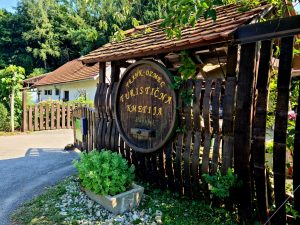The cows I’d gotten used to. The dogs, too. But turning a corner and coming face to face with a camel while monkeys cavorted like mad things wasn’t quite what I was expecting. Driving through Agra on my way to see Agra Fort was like driving through an open-air zoo. Pigs rut in the garbage. Goats walk the streets with a nonchalance that comes from being the undisputed kings of their home territory. Monkeys run amuck, so used to people that they practically come up to you and introduce themselves. Camels work pulling carts, doing the work horses might do elsewhere. It’s all rather weird but definitely rather wonderful. Mad.

Amidst all of this, life goes on, in the streets. Barbers set up stalls on the roadside, complete with mirrors, and men are shaved in full view of the world. It seems like everything is on show. Northern India has a different feel to it. Something I can’t quite put my finger on. But there’s definitely a difference.


I’d been to the Taj Mahal, had the tour of the marble factory, and was headed to see Agra Fort, something I was assured was quite different to other forts I might have seen in that this was one in which people actually lived. Fair enough.



It was here, in one of the many palaces, that the Shah who built the Taj Mahal was imprisoned by his son in an attempt to keep his dad from squandering his inheritance on yet another massive tomb. Mind you, if you had to be imprisoned, this wouldn’t have been a bad place to live. It is absolutely stunning. The decor, the carving, the marble. Absolutely stunning. That said though, a prison, no matter how beautiful it may be, is still a prison.



Elsewhere in Agra Fort, there’s a lot going on. There’s the beauty bazaar where the Shah fell for his third wife. Apparently, only beautiful women were allowed into the bazaar and it was the Shah who decided what he meant by beautiful. A lot of subjectivity going on there, me thinks. I wonder if the gentleman preferred blondes? In the rooms overlooking the courtyard lived the harem. It is still hard to get my head around all of this, around what it must have been like to live there.

There are all sorts of nooks and crannies that hold secrets and wonders. In one room, if two people face the wall at opposite ends and whisper to each other, their whispers are transmitted through the walls and ring out clearly. No secrets there. In another the air conditioning and heating systems of old are clearly visible. By pouring hot or cold water into the walls, the rooms were heated or cooled. You have to wonder at the minds who thought all this stuff up. And figured it out. And made it work. And did this so many years ago. A friend commenting on one of my posts recently recapped a conversation he had had while in India when he expressed amazement at how they do so much with so little. The reply: We wonder why you do so little with so much. Yes, the mind boggles.


Agra Fort is more like a walled city that a fort. Rebuilt in red sandstone in the 1500s, it too 1,444,000 builders 8 years to finally complete it in 1573. A large part was converted by the British into military barracks and even today the majority of the grounds is still in accessible to the public and under military use. Definitely worth a look if you’re in the neighbourhood: Rakabganj, Agra, Uttar Pradesh, India.
Share this:
- Click to share on X (Opens in new window) X
- Click to share on Facebook (Opens in new window) Facebook
- Click to share on Pinterest (Opens in new window) Pinterest
- Click to share on LinkedIn (Opens in new window) LinkedIn
- Click to share on Reddit (Opens in new window) Reddit
- Click to share on WhatsApp (Opens in new window) WhatsApp
- Click to share on Pocket (Opens in new window) Pocket
- Click to share on Telegram (Opens in new window) Telegram
- Click to email a link to a friend (Opens in new window) Email







2 responses
We do so little with so much? At least some of us have brought self-deprecation to a fine art.